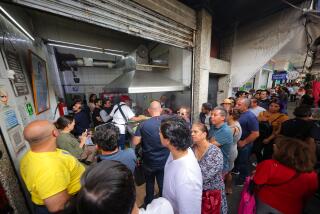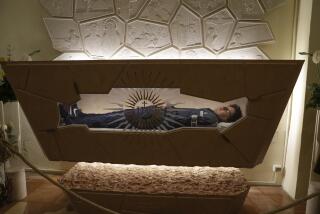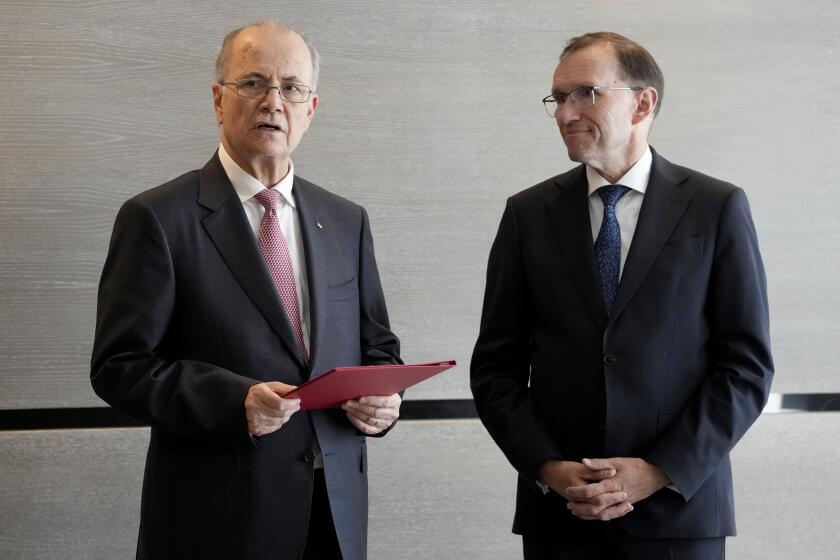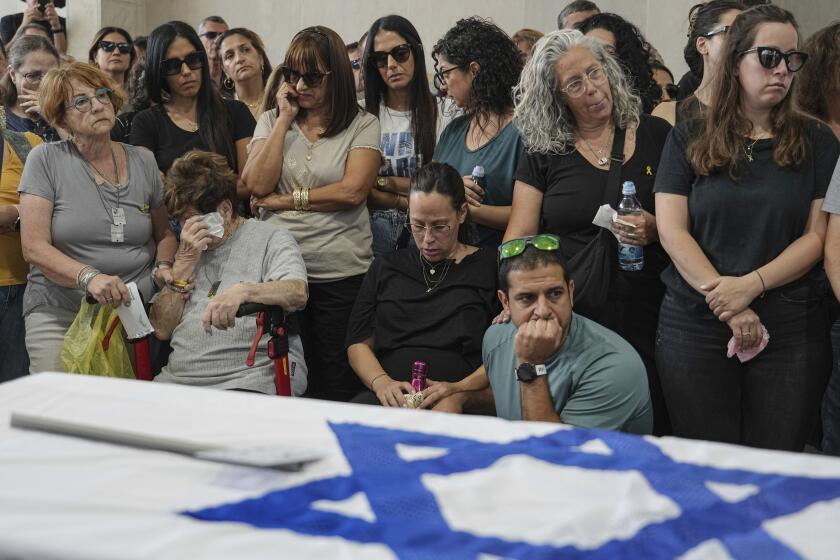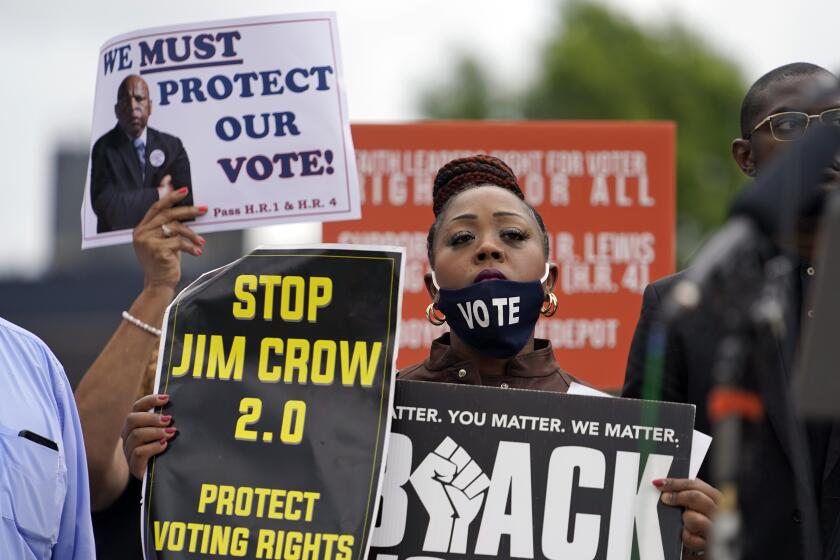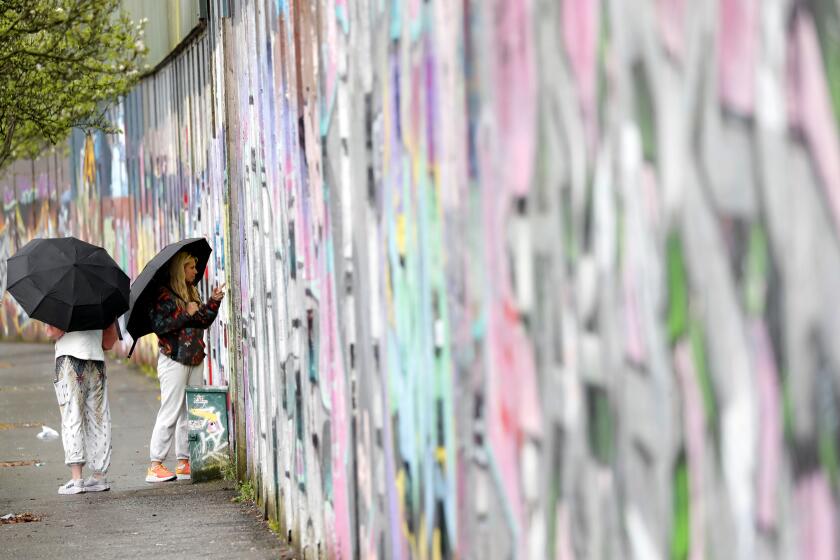EDUCATION : Idled by Truce, Salvador Rebels Hit the Books : Old battleground serves as a school for guerrillas coping with the complexities of peace.
They sit in a bombed-out school, under shattered trees, beside a gritty dried-out stream. Some are immersed in physics, others try to capture the essence of simple math and a few exchange greetings in clumsy English.
These are Salvador’s new guerrillas. And, as the old spiritual says, they are laying down their swords and shields--or, in this case, their AK-47s and grenades--and studying war no more.
Today’s lessons are about survival in a world far different from the bloody way of life the 500 young guerrillas encamped here have experienced over the 12 years of the civil war that has ripped El Salvador apart.
In place of the daily routine of war--the training, the bloody ambushes, the struggle for food and supplies and the expectation of victory--the men and women of the rebel Farabundo Marti National Liberation Front now are trying to get an education.
These fighters, young and old, have gathered here in compliance with a peace agreement signed Jan. 16 between the right-wing government and leaders of the five rebel armies that make up the FMLN. The agreement calls on the 7,000 or so guerrillas to stay in 15 designated centers until Oct. 15, when the current cease-fire is replaced by a formal peace treaty with full-blown political and social integration for the former revolutionaries.
There are no demands on the guerrillas during the waiting period, other than that they stay in camp, stay peaceful and demobilize in a step-by-step process.
But here in Aguacayo--scene of some of the most constant, vicious combat of the war--the toughened veterans of what is one of the best guerrilla armies in the world are using the time to try to acquire the skills and knowledge that they hope will gain them the political and economic power they had sought for so long at the point of a gun.
Many are studying to gain the ninth-grade status needed to apply for a new national police academy; others hope to make it to the sixth-grade equivalency that will get them jobs in stores or as mechanics; some hope to enter college and the middle-class life that they think will bring them peace and security.
The guerrillas are even learning English, the language of the great imperialist oppressor, the United States. “Why?” replied Hernan, a toughened veteran of eight years of revolution. “Well, it’s the world’s language of business. Besides, we know we have to get American tourists and businessmen to come here.”
The lessons, conducted by some guerrillas themselves--Hernan the English student also teaches calculus--and civilian volunteers, leave an impression of tranquillity, a languor as the students fight the numbing heat and rote teaching methods to keep awake.
But as far from the shattering experiences of war as Aguacayo seems today, the realities of the conflict just ended are always close by.
The town more closely resembles the jungle ruins of a long-dead civilization. Broken adobe walls pitch crazily through heavy vegetation. FMLN flags hang limply from makeshift poles over tents erected on the shattered foundations of burned-out houses. Aguacayo sits at the northeastern edge of the Guazapa volcano, a major FMLN stronghold throughout the war and a onetime haven for the rebels. That reputation brought on some of the most concentrated government air attacks of the conflict. The place looks like Beirut. There are surreal piles of rubble in place of homes.
Besides struggling with the bizarre scene, the soldier-students must endure the handicaps caused by the lack of proper classroom equipment and supplies.
English is taught atop a hill cluttered with barbed wire and broken stones; students sit on the ground while the teacher points to a shattered blackboard with a splintered reed.
The classes are six weeks long, and the first group to finish after the guerrillas moved into the Aguacayo camp did well on their placement exams, said Col. Chano Guevera, commander of the Norte de Guazapa camp.
But if the FMLN is beating swords into plowshares, or at least trying to tear down the walls of ignorance with a pencil, as one school mural indicates, there are still reminders that the war is not so far in the past: Some students, for example, prop assault rifles near their desks, and the camp is guarded by gun-carrying guerrillas.
Still, the air of peace is pervasive.
Sitting in the dusty plaza in front of the bombed-out adobe church in the center of town is an ice cream stand selling strawberry sherbet and sodas.
“We have peace,” Guevera said. “We have the fruits of life. There won’t be any more war.”
More to Read
Start your day right
Sign up for Essential California for news, features and recommendations from the L.A. Times and beyond in your inbox six days a week.
You may occasionally receive promotional content from the Los Angeles Times.
